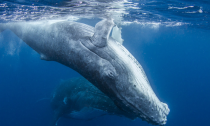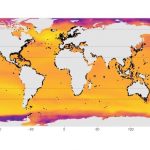
The University of Queensland was part of research which found protected areas missed many unique ecosystems, and have a greater impact on fisheries than necessary. A collaboration with the University of Hamburg, Wildlife Conservation Society and The Nature Conservancy assessed the efficiency of marine protected areas, which now cover 16 per cent of national waters around the world.
UQ’s School of Biological Sciences researcher Professor Hugh Possingham said international marine preservation targets are falling short.
“International conservation targets such as the United Nation’s Sustainable Development Goals call for protection of at least 10 per cent of all the world’s oceans and all marine ecosystems,” he said.
“Despite a tenfold increase in marine protected areas since the year 2000 — a growth of 21 million square kilometres — half of all marine ecosystems still fall short of the target, with 10 ecosystems entirely unprotected.”
The researchers assessed whether the expansion had been cost efficient — measuring potential earnings lost from fisheries — and effectively focused.
The University of Hamburg’s Dr Kerstin Jantke, who led the research, said that marine protected areas could have been far more efficient with greater planning.
“With a more strategic approach at the inception of global conservation targets in 1982, the marine protected area network could be a third smaller, cost half as much, and meet international targets by protecting 10 per cent of every ecosystem,” she said.
“It is clearly in the interests of nations to start strategic planning as early as possible to avoid costly imbalanced reserve systems.”
Nations will negotiate new conservation targets for 2020-2030 at a United Nations meeting next year in China.
“We urge governments to take note and be tactical from the outset, delivering better outcomes for nature conservation, but also saving them a lot of money,” Professor Possingham said.















Social Profiles